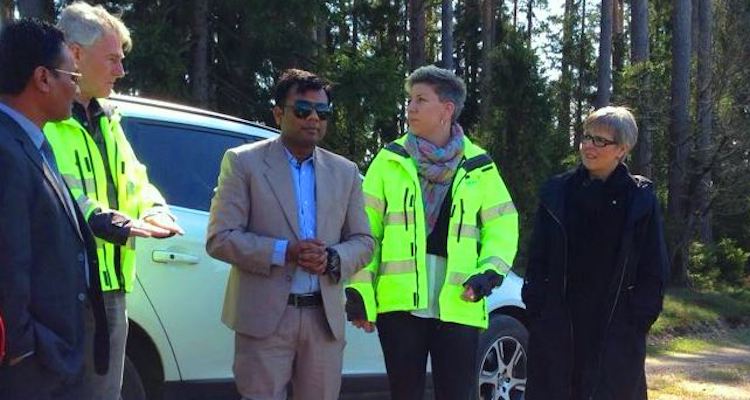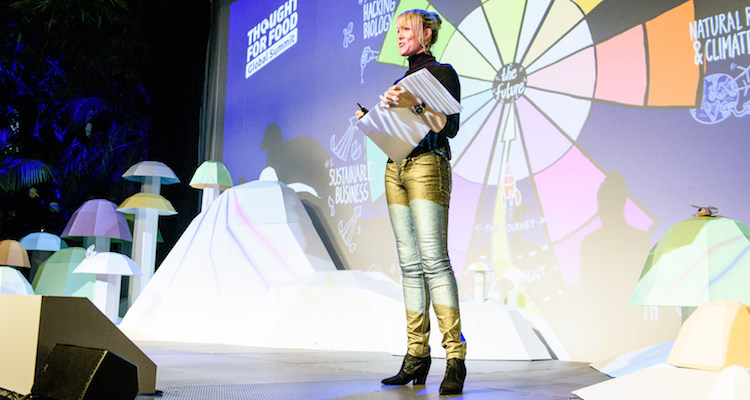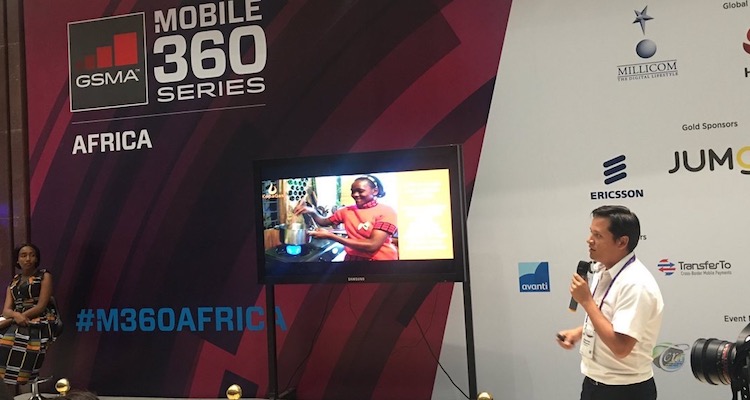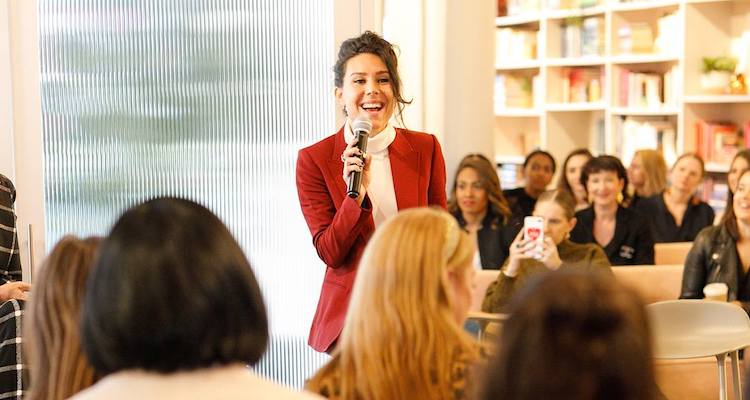Listen Now
Last week, we dove into an especially practical example of innovating to improve the plight of agriculturalist. Or, more specifically, those who benefit from their yields. I’m happy that this week we have another agricultural innovation around water – but one that works in a very different way, solving a very different problem. My guest for the 175th Terms of Reference Podcast is Sanjay Prasad. He’s working in an area where there is abundant, but very intermittent water supplies. His innovation, delivered under the project name SPONGE, captures water from dew and fog and transfers it to the soil where it can keep plants thriving. I hope you’ll enjoy this episode where we talk about life in the Himalayas, how an exceedingly simple technology is changing agricultural practices and how his organization is ensuring women and marginalized groups are core beneficiaries of the program. You can connect with Sanjay here: https://www.linkedin.com/in/sanjay-prasad-10200615/
IN TOR 175 YOU’LL LEARN ABOUT
- The difficulties of procuring water for farming in the hilly areas near the Himalayas
- The opportunities of air humidity, fog and condensed water as an agricultural resource
- How Swedish agency IVL assembled a multidisciplinary team to provide innovative and sustainable water harvesting solution for smallholders
- The ways IVL’s SPONGE project has increased the productivity of existing water harvesting techniques
- SPONGE’s successes, raking up tens of thousands of farmers, but the remaining logistical, financial and economic challenges to increase the reach
- The importance of networking on a global scale to deliver innovative solutions to rural areas of the planet
OUR CONVERSATION FEATURES THE FOLLOWING
Names:
- IVL Swedish Environmental Research Institute
- SPONGE: Sustainable Potato Farming in the Eastern Himalayan Range
- South East England Development Agency (SEEDA)
Topics:
- Environment, Ecology-Economics relationships, Sustainability
- Irrigation, Rainfall intermittency
- Water Security, Water Management, for Farming
- Water Policy
- Alternative Water Sources: Moisture, Dew, Mist, Fog, Air Humidity
- Water Harvesting Nets
- Soil Moisturization
- Water Loss, Water Harvesting Efficiency
- Farming, Cropping, Planning Strategy
- Landslide, Effect on Farming Productivity
- Pollution
- Water Purity, Waterborne Diseases, Diarrhea
Places:
- Indian Himalayan Region (IHR), India
- Nepal
- Bangladesh
- Bhutan
- Sweden
- China
EPISODE CRIB NOTES
Download an automated transcript. (02:02) Oh I’m sitting in my office in India, the location is quite interesting actually. I’m sitting in the Foothills of Himalayas. And so from my window office I can see the whole range of Himalayan Range the foothills and the terrain part and this area actually bordering Nepal, Bangladesh Bhutan. So I am somewhere sitting in there so geographically area away from my hand will stretched towards Bhutan if stretch my left leg it is towards India , my face will be heading towards Nepal. So this is the interesting part of this location where I am placed now. (02:58) Yeah, I mean this research institute IVL was founded in the year 1966 and basically the idea was to work towards national business interest with the view of carrying out research on air and water issues. But today we are a full frigid environmental agency concentrating on much more than that common to all of our assignment is the interaction between ecological economic and social IVL has a broad environmental profile unlike many other players. We combine the planet research and development with close collaboration with industry and public sphere. Basically we focus on research it was based in Sweden’s previously but our clients and customers are found all over the world we undertake research projects contract assignments. In the entire environmental field at IVL environmental expert’s, engineers, social scientists ,economists and behavior scientists work together and actually this is the key, I mean this enables us to work holistically and tailor each assignment to customers need. The goal as a whole of IVL to help clients develop resource and cost effective solutions that contribute towards a sustainable society. (04:33) Finally, you have to talk about the background of this area, I mean we have to understand the geographical part of this entire bordering areas of Nepal and Bangladesh but on a northeast of India, I mean there’s a great demand for sustainable robust irrigation innovation in this region of Bhutan, Nepal and Bangladesh, why because it has been seen that the area is very dry through there is the abundant rainfall but the supply is very intermittent. I mean there is the availability of water in this area if you measure through the rainfall gauge, but when practically when you see the water is very intermittent. Why? Because under the soil there’s whole area is full of rocks and rocky stones. So you have very small opportunity for the traditional irrigation practices to impede into and provide better results so the soil bit is very thin in this area. The reason behind is that there is a presence of rock, solid rocks and that actually prevents better agricultural practice with the help of traditional irrigation, which was very also very much lacking in this area because the kind of geographical texture of soil this area has. But all these countries we only talk about India, Nepal Bhutan all these countries have their water policies and five-year projects and they all try promote this sort of sustainable rural irrigation initiatives. The current water management package is under considerable stress and falls out for solution with a great upscaling potential and here lies the introduction sponge in this project Background. (06:26) Yeah, I mean when I talk about SPONGE, SPONGE is actually an innovative irrigation technology It has a potential of greatly improving the water utilization and supplying using water from form Dew and rain I mean I have to be make it in inverted commas I mean we are only using water from forgiven rain and we are not interfering in the ground water. That’s number one use of the sponge. Sponge increases the reliability in the region with abundant but very high intermittent water variability improving soil moisture content. I mean the whole idea of irrigation is to make your soil moisture, but since in traditional in the irrigation practices there was lack of irrigation facilities and also because of the rocky stones present beneath the soil. It is become difficult to make the soil moisture always, so sponge provides an easy to install system, a robust water storing soil moisturizing system that enables cultivation on a very marginal lands and provides better opportunity for poor communities and households. Actually, how the technology works soil moisture content in increased and kept at optimal levels through a cascading system of buried sponge inside the ground with form quatrain units supplied through fog and dew harvested water. Water is supplied in big volume and recycled minimize water loss that means we only use that amount of water which is needed for soil moisturization and what is waste what comes out from the system will again be recycled and pushed into the system. So the water loss is absolutely zero in this case. (08:30) There are two components of the system. One is the soil bed which you’re talking about where these sort of crops will be grown I mean this soil bed. Under this soil there will be sponge units beneath buried in the ground and this height of the buried sponge will be not less than 1 feet. So there is a flat soil ground there will be sponge and above this one there will be soil for cultivation. And this sponges are connected with the water channels and this water channels will be connected with the collected water from Dew and fog. We have this control system how much water we need to moisturize to send the water to sponge so that the soil is moisturized. So you can visualize a system where in the ground you have ground with the sponge buried inside the ground and water channels are connected to this sponge and this water is coming through a tank and this the water from this tank is collected from dew water or rain. (09:36) Yeah , I mean I’m these areas where we’ve been talking about the Himalayan, I mean the humidity content is very high in this areas almost through the year I mean and that gives us tremendous opportunity to collect this fog. I mean we will install a system a rectangular system which will be standard horizontally and this net mesh it is embroidered with mesh of nets and when there is a fog the fogs are collected in this small copulared nets. And you know one block of this system there are some 2000 capillaries of nets that collects these given fog and ultimately when this dew and fog are collected it will cascade down to water channel and then collected in the water time. So that is something we haven’t utilized anywhere. (10:36) This collection of form and dew research is going on since years like since seven and eight years. But you know in this area as I mean I see I mean people use this kind of you know they spread a sheet of plastic or the spread of sheet of tin in open ground and in the morning they collect water from that I mean you can easily collect one on two mugs of water if you put that aluminum sheet or a plastic sheet in the ground throughout the night. So, that actually brings at us the idea I mean-why not utilize this channel if it is abundantly available throughout the year, at least we are going to get a 20% or 30% saving if you going to utilize this and that is it very much powerfully we don’t need any power or any you know install this in this nature. And also along with the mesh, this net we are also installing a system where we can also collect rains in this system which was not collected previously so collection of fog and dew along with rain harvesting is the key is the water we are talking about to be used for this cultivation. (11:56) Exactly, and we are not interfering with the groundwater which is going worse day by day. (12.16) Actually, weird idea is to dot to change the kind of behavior and the pattern of cropping which the farmers have been using for so many years. So we stick on to potatoes and since potatoes are very contusive because the roots of potatoes can’t go beyond 1 feet in the ground so this the potato the roots along with garlic, ginger and turmeric and also green potato which was very much grown in this region are the main target crops. Because the farmers are very much used to grow these kind of crops in their soil from the beginning so that’s why we want to focus on this problem the crops will be similar only the irrigation practices will differ. (13:12) I mean working in this region is not easy cake. I mean here I mean you know the fore and foremost job is to win the confidence of the farmers and you can never find any more suspected people than farmers in the world. I mean they I mean if you push them to believe something they will never believe you the only point what I experience in this region is that they only believe in one thing seeing and believing when they see things see from their own eyes then they will believe. And, if you manage to bring one group of people to motivate you can see lines of groups will come after them so that’s the trick we are focusing mainly on the barriers we’re I mean still this launch project is devoted to women empowerment. I mean what happened in a traditional practices I mean level is very low the irrigation practices very heavy machines which only men can handle like big tractors and cow plows through applying through cows. But with the sponge system,we welcome the women who have been you know doing the other works collecting water and other things who have been very less say in the decision making. We want to welcome these women into the system more and more so that because the sponge system offered them a really good opportunity to be a part of it. I mean more than men no big machineries only controlled water system dodging the water system and then during the other part so allowing I mean making this women come to system our system and making them readily believe along with their husbands along with their households is one of the barriers we are working out. Because this area is very traditional area full of water docks where they say that females do not work they were meant to do domestic works only. So that’s what we are working on that why we have a full team who will work on the field doing counseling doing psychosocial workshops in fact our pilot at which we have done is great showcase for this farmers to come and see and believe what has happened here. (15:38) Yeah, I mean we have started with the innovation with the half acre of land. I mean but now we aimed to reach more or less twenty thousand farmers household at the end of three years And the first year we are doing a demo site in in Indian northeast part of India where I am sitting. The second year we will be focusing this project I mean we will be installing two more demonstration sites in Nepal and Bhutan and the third year we will go to Bangladesh. So this is the initial plan for three years gathering this Himalayan region but of course I mean this sponge is a project which can be used where we have little water supply where we do not have a surface of ground. I mean we are also doing research now on introducing sponge in the kitchen concept like organic garden in the kitchen I mean a small block of sponge product with one square meter then growing your kitchen households like coriander and all I mean all we used to join a funnel of your tap. (16:47) Exactly that is we are thinking globally in terms of marketing. (17:02) I mean in the hilly region, I mean the Himalayan region and the whole hilly region where we don’t have actually soil in the ground. I mean we have soil but it doesn’t support crops. I mean these areas are very contusive to sponge because we don’t need to do anything with the soil, we don’t need to plow the soil. We only need to prepare a soil bed. I mean it has been very magnificent with us shifting cultivation. Wherever it is you’ve been used I mean we know that shifting cultivation is prone to landslides. I mean more and more shifting cultivation invites landslides. So if you can convert the shifting cultivation into sponge cultivation I mean I think it will be great boon to prevent this enviable disaster also globally speaking I mean . (17:54) Of course I’m in in this demonstration sites we will doing in coming three years. I mean it will actually move us closer towards forming a learning organization. I mean each demonstration site will give us measurements, statistics, manual how much exact quantity is required for exact amount of land cultivation, that sort of measurement we are looking for exactly. So that we can multiply these units you know in the real ground and then by sitting in the office we can say that we install a system with this measurement and this will be the production. That will give us I mean these demonstrations is in three years through this learning organization which will maintain the quality which will also increase the efficiency and the training component and also produce good leaders within the project in different places to carry this forward and that will make this learning organization towards more perfection, gradually. (19:03) According to the survey we did the end-users are twelve thousand dollars what we have calculated per hectare to install this sponge system. $12000 for measurement of one hectare of land, we have also talked to financial institutes. And what we have planned the financial model is that farmers can give 50 percent initial down payment for installing the system in the land and the rest 50 percent they can pay in installments. And whenever for the marginalisation we have also talked with the micro enterprises and credit institutions and they are also ready to give financing facilities to these farmers. So this part is very much well done the homework is well done in the field in terms of financial leverage for the farmers. (20:02) The investment as part our scale is almost 30 percent lower what they are spending right now. I mean for example I mean I want to mention this without sponge if I talked about the traditional drip irrigation practice what we need is we need water which has to be pumped from the ground and that needs a diesel generator or electrical pump and if you calculate the amount of diesel cost or the fuel cost per hour it is actually two folds that what they are investing in the system so it is yeah it is a win-win situation for them. (20:56) I mean IVL was very much focused on the international operations since last 10-15 years. I mean our international operations are currently concentrated in India and China, the two countries with very rapidly growing economies and also the two worlds’ most biggest polluters with the same time. The rapid development of China and India can always has led to better standard of living for many of the people who live there. So in India we have active for last 15 years as advisors to different companies and advisors to government for different projects. I will has also been involved in many projects research and training programs in India from few years. Our activities in India have primarily targeted the introduction of more eco-friendly production processes and cooperation between India and other financial institutions in the field of environment, technology, energy and biotechnology. So IVL’s plan basically here is to develop a cooperation between the local partners who are working in this region and the national plan and also international donor agencies to introduce smart and resource efficient solutions that can help India reduces emissions and also manage limited resources. The focus will primarily be on Water Management which is our main subject the idea is to exploit both local know- how and introduce IVL expertise to promote the utilization of Eco – friendly energy resources and also energy efficiency and clean technologies. (22:29) We are also in our R1 step up with IVL as the lead partner and this project is being funded by Seeda. The first time we are introducing a kind of ground water supply system in the hilly areas I mean normally I don’t know If you have visited any hill town. If you go to a hill town basic in India and in Nepal and Bhutan you can see the water pipelines over the surface. I mean you can see a bunch of pipes around 200 pipes or 300 pipes bunched together individually and they’re running over the roads, beside the roads. The first time IVL has introduced a groundwater water piping system in the hilly region through a circular system where the water is kept kept at pressure always to limit the bacteria generating in the pipelines. I what happen in the hilly regions because of lack of treatment facilities, more or more people becoming prone to diarrhea. Because in hilly region you know if people in the altitude of 5000 meters using water is again coming to the person who living in the 750 meters altitude So this water is flowing from top to bottom but treatment from top to bottom is very important otherwise the people living in the lower altitudes they will suffer from waterborne diseases. And that’s what we try to address in that our R1 system we are working with and that’s also a kind of innovation which was not addressed. (24:29) We have publications. I mean we have we are using all the social networking platforms I mean to keep ourselves updated all the time but you know the most challenging part is you are right that the farmers are important clients are always important but the point is that grasping something from the local knowledge and then revamping it in your laboratory and then present it to that local community is the main challenge which actually makes us you know a beat. The idea is that I mean I am giving what they have offered in a refreshing mode in a fresh mode. I mean will they going to accept it and what are the other supporting things like I told you a counseling psychological support behavioral counseling. I mean we are presenting this product with these aspects of social intervention. We are talking with the farmer groups if you can win small farmer group and the key of farmer groups will follow I mean besides the demolition sites we have selected I mean the farmers available for their land I mean we have a limited 4 hectares of land for the first year and now after talking to the farmers you know there are plenty of farmers who are just coming in our office to say why don’t you take my land? why don’t I am ready to give my land so that is the kind of encouragement and motivation we get when people understand when people express their pleasure and satisfaction and expected that something is going to happen to them. I mean that makes us fresh. (26:17) We talked about irrigation practices. I mean the whole of South Asia we always say that you know production farming happens from irrigation practices. But you know actually no one bothers I mean we talked about harvesting for the waste reuse but no one actually bothers I mean have deep down how to utilize this rainwater harvesting for irrigation. I mean particularly irrigation that is one thing though it is very common name and if you ask someone all these sources though yes we have been working in this direction. Basically for irrigation rainwater complete works has been taken and I mean think about these regions where rainfall is very abundant but still this people are not able to cultivate their land because of water. I mean that’s a contrasting picture that needs to be come to forefront. Why it is happening? Why we are not able to manage those abundant water supply rainfall to introduce in the irrigation system?Please share and participate
If you have any questions you’d like to ask me or Sanjay directly, head on over to the Ask Stephen section. Don’t be shy! Every question is important and I answer every single one. And, if you truly enjoyed this episode and want to make sure others know about it, please share it now:[feather_share show=”facebook, twitter, linkedin, google_plus” hide=”reddit, pinterest, tumblr, mail”]
Also, ratings and reviews on iTunes are very helpful. Please take a moment to leave an honest review for The TOR Podcast!




